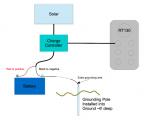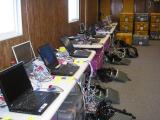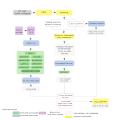
On Friday, February 22nd, New Mexico's newest member of the United States Senate, Martin Heinrich, paid a visit to New Mexico Tech, and the EarthScope/EPIC. Senator Heinrich, who won his seat in the 2012 general election, is a strong advocate for Science, Technology, Engineering, and Mathematics (STEM) Education, and is the only engineer currently serving in the senate.
Senator Heinrich was given an overview of activities at the school by New Mexico Tech President Dr. Dan Lopez, and also toured the Mechanical Engineering Department. Dr. Rick Aster escorted Sen. Heinrich on a tour of the EPIC, the world’s largest and the nation’s flagship federally-funded lending library of seismology equipment.









